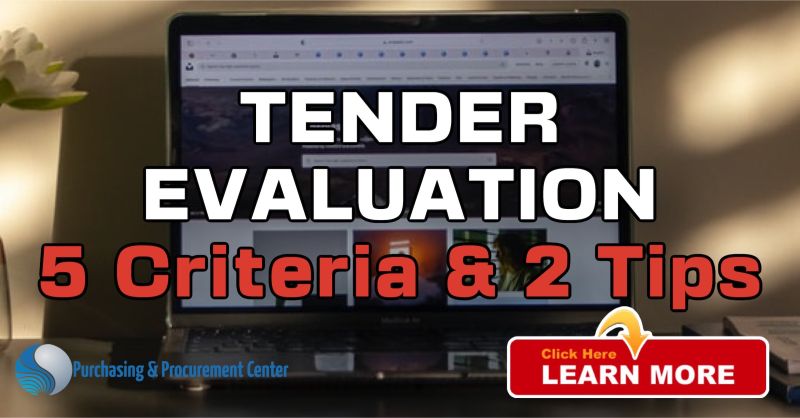TENDER EVALUATION
5 Criteria and 2 Tips

What are tender evaluation criteria? The purpose of an evaluation process in sourcing is to identify which bid offers the best value for money i.e. the most economically advantageous tender or proposal. The criteria that are specified in the invitation to tender document are the basis for the buying decision.
Preparation before issuing the tender
The tender evaluation criteria need to be defined prior to sending out the bid document or the Request for Proposal (RFP). The thought process is important at this stage as the criteria to be used for assessing the tender needs to be communicated to the bidders. Tender Evaluation criteria should reflect the risk and the value of the contract
In the Government sector it is normal practice to provide both the criteria and the weightings, i.e. the exact basis on which their offer will be judged. In the private sector, most organizations provide the general criteria but often do not disclose the weightings. Cost is usually one of the main criteria.
- Tip: Best practice is to provide a
costing template for the bidders to complete so that you can compare the
bids easily without a lengthy calculation and analysis process
Cost vs price
Cost is more than the base price. It will include delivery, installation and transportation if they are not specified separately. It is important to ask for any on-going operational costs, warehousing, maintenance, spares, consumables, licenses and various other costs that may be incurred.
- Tip: Your costing template in the tender
should allow for and encourage bidders to include all the costs
associated with the commodity over its whole life.
Quality requirements
All non-cost criteria should be defined in the bid document. The criteria to be used in the tender evaluation process will vary depending on the goods or services being sourced. Here are some of the main ones:
• Technical issues and functional ability to fulfill the requirements
• Continued technical support and after sales services
• Ability to deliver on time and complete in the required time frame
• Compliance with legal and statutory requirements
• Acceptance of the proposed terms and conditions
• Training and on-site installation
• Tender is complete and signed by an authorized person
Criteria weightings
Each separate criterion should have a percentage or a number of marks allocated to it highlighting the relative importance of each area, disclosed in the RFP if appropriate. Bids should only be assessed against the criteria issued in the invitation and no new assumptions made when performing a tender evaluation.
Assessing the Tender responses
An important first step in the process is to ensure that the bidders meet the overall basic requirements and that the bidders fully understand the implications and the risks of implementing the service or delivering the goods. Provided that the template layout you supplied is clear, scoring the responses is easy and the process to evaluate tenders should be straightforward.
Leave this page about evaluating tender and go to tender management
Return from tender evaluation to Purchasing & Procurement Center Homepage
